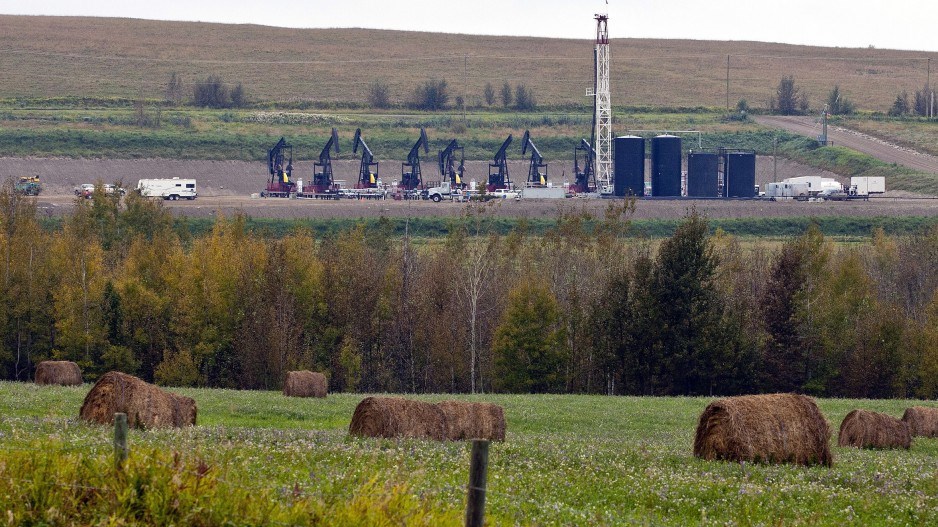A three-year study of northeastern B.C. has identified two tight oil plays with the potential to produce tens of millions of barrels of oil.
The study was conducted for Geoscience BC by Petral Robertson Consulting, which focused on areas outside of the Montney, since that region’s oil and gas reserves are already well understood.
The study looked at 19 potential reservoirs, but eliminated 10 as having low prospects.
Six are deemed to be “B” plays, which means they show good potential but lack the test horizontal drilling activity needed to confirm their potential.
Two areas have been graded “A” plays – the Halfway formation north of Fort St. John and the Chinkeh formation northwest of Fort Nelson.
The area had conventional oil production in the past, between the 1950s and 1970s. Some conventional wells are still producing.
Old and declining conventional oil producing formations can often be revived through horizontal drilling and hydraulic fracking, which can unlock oil and gas that was heretofore unrecoverable.
“There are historically some really nice older oil fields, particularly around Fort St. John area and a little bit north of there,” said Petral Robertson president Brad Hayes.
“Really nice discoveries, most of them drilled up in the 50s and 60s and 70s and since then mostly depleted. There haven’t been many new light oil discoveries, and so that’s one reason everyone’s so excited about finding oil in the Montney.”
The Montney formation, which straddles the B.C.-Alberta border, has attracted billions of dollars worth or investment, largely because of its “wet” gas – i.e. light oil, and other natural gas liquids, like condensate. Oil and gas producers in B.C. produced 7.7 million barrels of oil in 2017, according to the BC Oil and Gas Commission, which was down from 8.5 million in 2016.
Whereas Western Canadian Select, the heavy oil produced in Alberta’s oil sands, is heavily discounted – currently selling at $32 per barrel – companies like ARC Resources (TSX:ARX) are getting roughly $70 per barrel for the light crude it produces in Alberta and in the Montney.
Hayes points to plays like the Cardium in Alberta, which was a prolific conventional oil producing region that declined but which has been reinvigorated by horizontal drilling. He thinks the Halfway formation in particular could likewise be revived with horizontal drilling and fracking.
“The geological work suggests that it might be surrounded by a halo or a fringe of lower quality rock that we just could not produce economically in the good old days with the conventional wells," he said. "But if you go in there with horizontal wells and the multi-frac technology that we use now, you might be able to establish a bunch of economic producible oil from the Halfway formation that people just didn’t look at before.
“We think that the potential could be in the order of tens of millions to hundreds of millions of barrels of oil recoverable.”
But that is a rough estimate. Hayes said it will require oil exploration companies going in and drilling some wells to establish whether they can produce economically.
“We know that the volume of oil that’s in the ground is big,” Hayes aid. “Up until horizontal multi-frac wells, we just have not been able to get it out.”
Currently, most of the bigger and medium-sized companies are focused on the Montney formation. Hayes expects it would be smaller, junior exploration companies that might be attracted to the Halfway and Chinkeh formations.
Hayes expects the Halfway formation will be the most attractive area for exploration, because there are legacy conventional wells there already.
“What you’re drilling is a halo or a fringe around the old conventional production. So you’ve got a bunch of pipeline capacity that’s there. It’s probably underutilized now because the conventional wells are depleted so they’re not producing what they used to.”
The Chinkeh formation is a different story.
“There’s very little or no oil production up there, so (if) they discover something up there, they’re going to have to establish a pretty significant resource because they will have to build some new oil pipeline there.”




